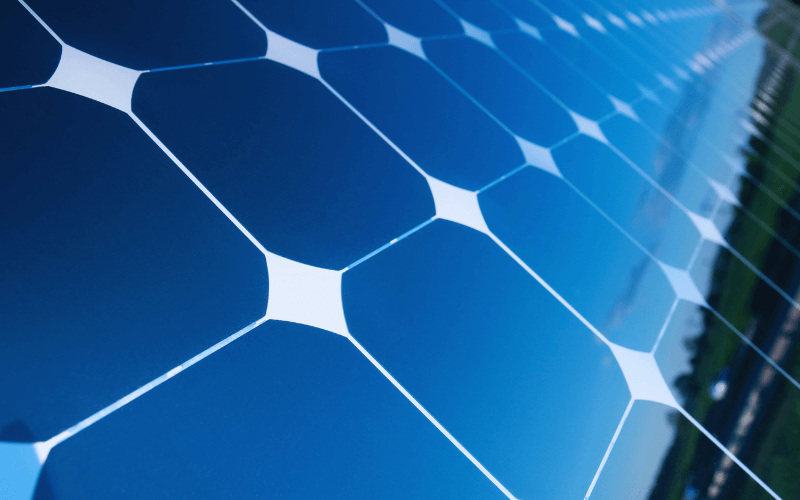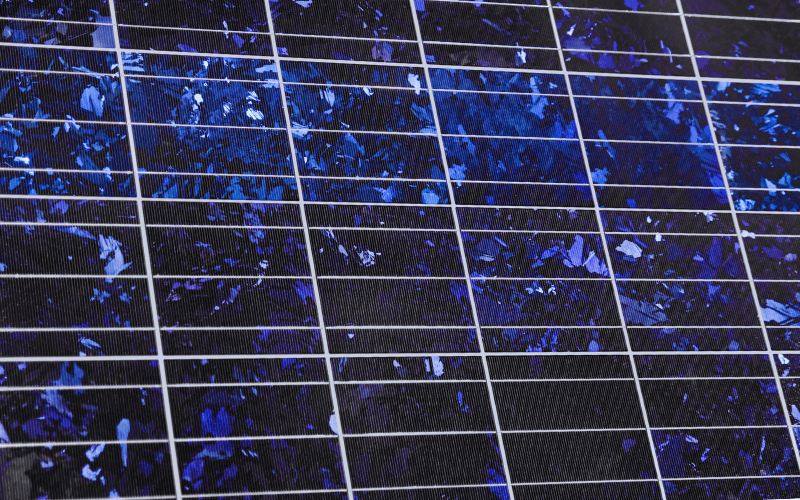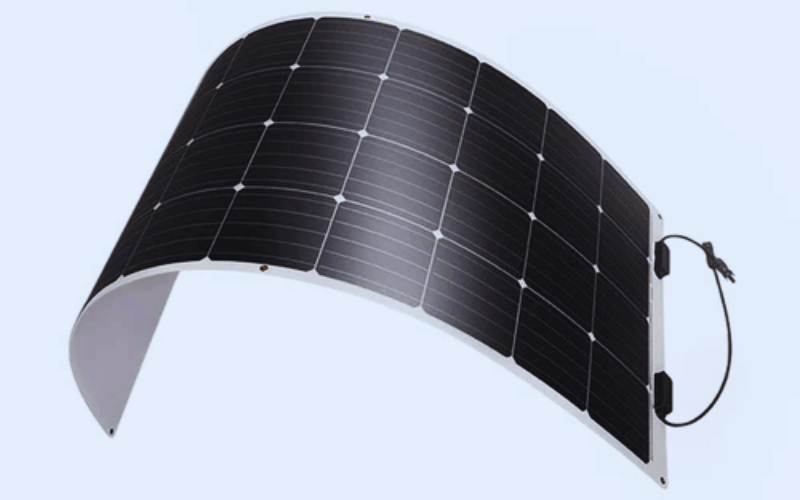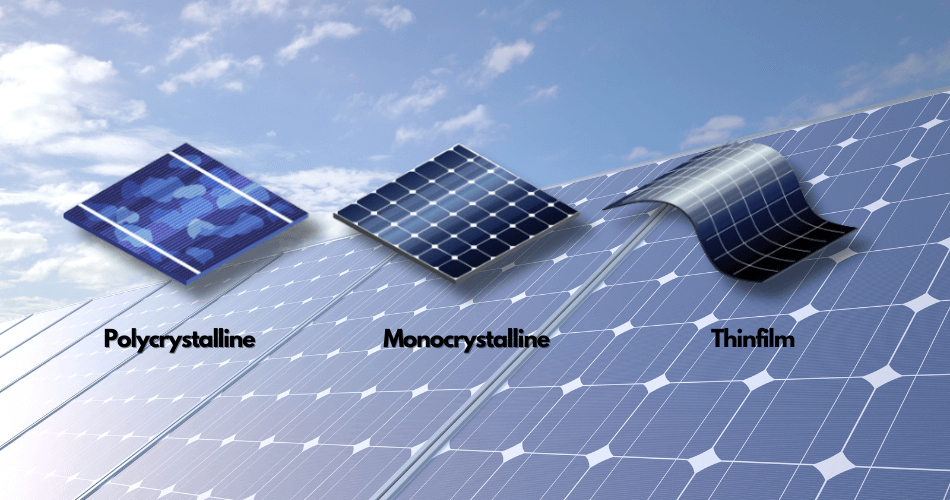In the quest for renewable energy, solar panels have emerged as a pivotal player. The market is inundated with diverse types of solar panels, each with unique characteristics. Understanding these variations is crucial when deciding which solar panel is the optimal fit for your needs.
Table of Contents
Monocrystalline Solar Panels: The Elite Choice

First in the lineup are monocrystalline solar panels. Crafted from a single crystal structure, typically silicon, these panels are easily recognizable by their uniform dark hue and rounded edges. They boast an impressive efficiency rate, with the most advanced models surpassing 20%.
This high efficiency also means they require less space, making them ideal for residential and commercial installations. However, such premium features come at a cost, making them the most expensive option in the market.
Polycrystalline Solar Panels: The Practical Performer

Polycrystalline (or multi-crystalline) solar panels are crafted from multiple silicon crystals. These panels offer an efficiency rate of around 15%. Although they lack in efficiency, they make up for in affordability.
Their simpler manufacturing process translates into lower production costs, making them a wallet-friendly option. Though slightly less space-efficient and sensitive to high temperatures, they’re a prudent choice when ample space is available.
Thin-Film Solar Panels: The Flexible Innovator

Last but not least are thin-film solar panels. These are created by depositing a thin layer of photovoltaic material onto a substrate like glass or plastic. Their flexibility and lightweight design make them the go-to option for unconventional roof styles. Although they lag behind in efficiency (typically around 10%), they compensate with lower production costs and adaptability.
Zooming In: Monocrystalline Solar Panels
Pros and Cons: A Balanced View
When considering monocrystalline solar panels, it’s crucial to weigh their advantages and disadvantages. A higher price tag and potential performance issues in high temperatures offset their high efficiency and compact size.
They’re the frontrunners for longevity, often backed by a 25-year warranty, and exhibit admirable heat resistance. Perfect for cloudy areas, they perform admirably in low sunlight. However, they do generate significant waste during manufacturing and can suffer circuit breakdowns if obscured by dirt, shade, or snow.
Comparative Efficiency: A Solar Showdown
In the arena of efficiency, monocrystalline panels outshine their polycrystalline counterparts. With efficiency rates reaching above 20%, they produce more electricity and require less space. However, this high efficiency comes at a cost, both financially and in terms of sensitivity to temperature.
Lifespan and Durability: The Long Haul
Durability is where monocrystalline panels truly excel, boasting an average lifespan of 25 to 30 years and, in some cases, up to 40 years. This longevity is a testament to the quality of materials and manufacturing processes. However, it’s important to remember that their efficiency may wane over time.
Polycrystalline vs. Monocrystalline: A Comparative Study
Distinguishing between polycrystalline and monocrystalline solar panels is key to making an informed decision. While monocrystalline panels are crafted from a single crystal structure, polycrystalline panels are made from multiple silicon fragments.
This fundamental difference affects their efficiency, cost, and appearance as we discussed above. Monocrystalline panels are more efficient and perform better in high heat and low light but are pricier. On the other hand, polycrystalline panels are more affordable but less efficient.
Thin-Film Solar Panels: Exploring the Benefits
Versatility and Innovation
Thin-film solar panels shine in their versatility and innovative features. They consume fewer materials, are lightweight, and boast a better temperature coefficient, making them less affected by high temperatures. Their broad-spectrum absorption is advantageous in diffused light conditions.
These panels are less costly and are particularly suitable for large-scale installations due to reduced installation costs. However, they have a lower efficiency and a shorter lifespan compared to crystalline panels.
Efficiency Comparison: A Closer Look
In terms of efficiency, thin-film panels lag behind traditional silicon panels. For instance, CdTe thin-film panels have a median efficiency of 11-13%, while traditional silicon panels range from 15-22%.
Diverse Applications: Tailoring to Your Needs
Thin-film solar panels are highly adaptable, finding use in building-integrated photovoltaics (BIPV), utility-scale solar power plants, off-grid solar projects, portable solar systems, and sophisticated building-integrated installations. Their lightweight and flexible nature makes them suitable for a variety of applications despite their lower efficiency.
Choosing the Right Solar Panels for Off-Grid Solar Systems
When selecting solar panels for an off-grid system, it’s important to consider factors like energy requirements, budget, climate, and available space. Monocrystalline panels are efficient but costly, while polycrystalline panels are more affordable but less efficient. Thin-film panels are flexible and suitable for unconventional surfaces.
So, the choice largely depends on your specific needs and constraints.
Conclusion: Harnessing Solar Power to Shape a Sustainable Future
As we venture into a future where sustainability is paramount, understanding the nuances of solar panel technology is vital. From the high-efficiency monocrystalline panels to the adaptable thin-film options, each type serves a unique purpose. Whether you’re seeking energy independence with an off-grid system or just looking to reduce your carbon footprint, there’s a solar solution tailored to your needs. Embrace the power of the sun and join the movement towards a brighter, greener future.
